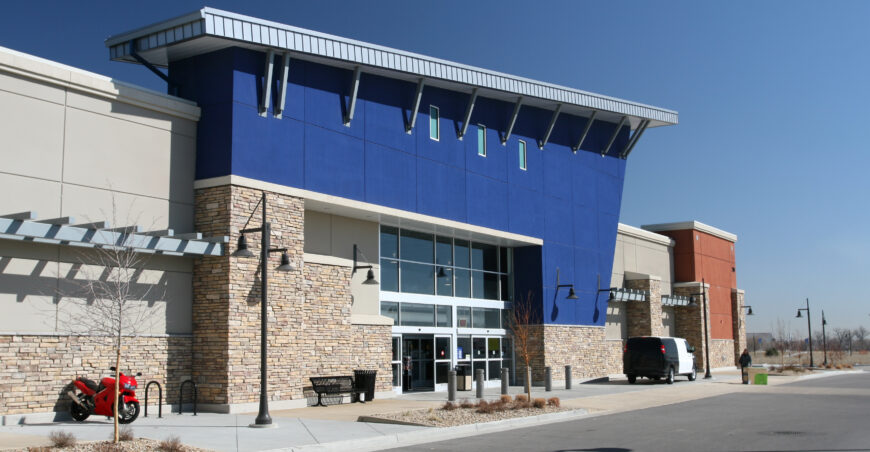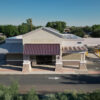In this article, we will explore the future of big box retail shopping centers, including the challenges they face and the strategies they are adopting to remain relevant in the face of a changing retail environment. The advent of e-commerce and the rise of online shopping has undoubtedly transformed the retail industry, prompting many to question the future of brick-and-mortar stores, particularly those housed within large-scale shopping centers known as “big box retail.” While many pundits have predicted the demise of traditional retail stores, the reality is that these centers continue to play a crucial role in the retail landscape.
The Challenges of Big Box Retail Shopping Centers
Big box retail shopping centers are facing a number of challenges that threaten their long-term viability. One of the biggest challenges is the shift towards e-commerce, with online retailers such as Amazon dominating the market and attracting consumers with their convenience and low prices. In response, many brick-and-mortar retailers have sought to establish an online presence in order to compete with these e-commerce giants.
Another challenge facing big box retail shopping centers is changing consumer behavior. Consumers today are more discerning than ever before, demanding a personalized and engaging shopping experience that meets their individual needs and preferences. As a result, retailers must work hard to differentiate themselves from their competitors, offering unique products and experiences that cannot be found online.
Finally, big box retail shopping centers are facing increasing competition from alternative retail formats, such as outlet malls, lifestyle centers, and mixed-use developments that offer a wider range of amenities and attractions. These alternative formats are often located in more desirable locations, such as urban centers or high-traffic areas, and offer a more diverse mix of retail, dining, and entertainment options.
Strategies for Success
Despite these challenges, many big box retail shopping centers are adopting innovative strategies to remain relevant and competitive in the evolving retail landscape. One strategy is to focus on experiential retail, offering customers a more engaging and immersive shopping experience. This can include features such as interactive displays, pop-up shops, and events that showcase products or services in a more interactive and engaging way.
Another strategy is to focus on community engagement, working closely with local organizations and charities to build strong relationships with the community. This can involve hosting events, sponsoring local causes, or offering special discounts or promotions for local residents.
Some big box retail shopping centers are also diversifying their offerings, expanding beyond traditional retail to include a wider range of services and amenities. This can include things like fitness centers, movie theaters, or even healthcare clinics, which can help to attract new customers and increase foot traffic.
Finally, many big box retail shopping centers are focusing on sustainability and environmental responsibility, adopting green practices such as energy-efficient lighting, recycling programs, and sustainable building materials. This can help to attract environmentally conscious consumers who are looking for retailers that share their values.
The Future of Big Box Retail Shopping Centers
Despite the challenges facing big box retail shopping centers, many experts believe that these centers will continue to play a crucial role in the retail landscape. One reason for this is that many consumers still prefer to shop in person, particularly for items that require a hands-on experience, such as clothing or furniture. In addition, many big box retailers have been successful in establishing an online presence, allowing them to compete more effectively with e-commerce giants like Amazon.
Another reason why big box retail shopping centers are likely to remain relevant is the increasing trend towards omnichannel retail. This refers to the idea that retailers should offer a seamless shopping experience across all channels, whether online or in-store. By combining the convenience of online shopping with the personal touch of in-store experiences, retailers can provide a more compelling and engaging shopping experience that meets the needs and preferences of today’s consumers.
In conclusion, big box retail shopping centers are facing significant challenges due to the changing retail landscape and increased competition from e-commerce. However, the future of these centers is not bleak. Retailers are adapting to the changing environment by adopting innovative strategies such as experiential retail, community engagement, diversifying their offerings, and focusing on sustainability. By doing so, they are meeting the needs and preferences of today’s consumers and providing them with a personalized and engaging shopping experience.
Moreover, big box retail shopping centers play an important role in the retail landscape, providing a valuable brick-and-mortar shopping experience that cannot be replicated online. Despite the increasing popularity of e-commerce, research shows that consumers still value the ability to see and touch products before purchasing them. Big box retail shopping centers offer a wide range of products, from electronics and appliances to home goods and apparel, making them a one-stop-shop for consumers.
Additionally, these centers provide employment opportunities and generate economic activity in the surrounding communities. Many big box retail shopping centers are anchor tenants for smaller retailers and restaurants, creating a vibrant retail ecosystem that benefits both consumers and businesses.
Furthermore, big box retail shopping centers have been evolving to meet the changing needs of consumers. For example, many centers have been adding new tenants such as fitness centers, entertainment venues, and healthcare providers to diversify their offerings and provide a more comprehensive shopping experience. These centers have also been adopting technology solutions such as self-checkout kiosks, mobile payments, and augmented reality to enhance the shopping experience and make it more convenient for consumers.
In summary, the future of big box retail shopping centers is not bleak. While they face challenges, retailers are adapting to the changing landscape and finding ways to remain relevant and competitive. As consumers continue to seek out engaging and personalized experiences, these centers will continue to play an important role in the retail landscape, providing a valuable brick-and-mortar shopping experience that cannot be replicated online. If you own a shopping center or Big Box Retail and are looking for a leasing or sales team to help create value for your center please reach out to the ICRE Investment Team to learn more how we can help.
















